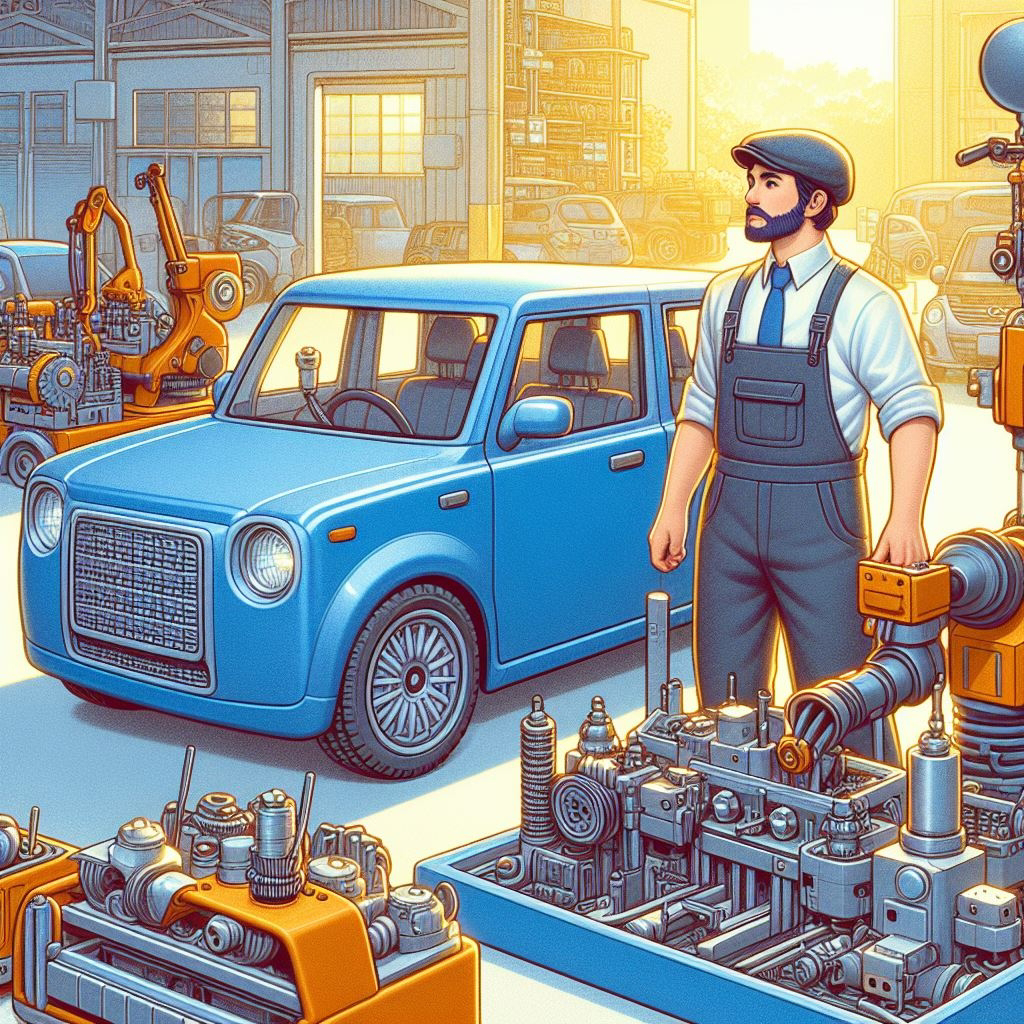Henry Ford: The Man Who Made Cars for Everyone
Once upon a time in the bustling city of Detroit, there lived a curious young boy named Henry. Henry loved tinkering with machines, taking them apart, and putting them back together. His hands were grease-stained, and his eyes sparkled with wonder.
The Quadricycle Adventure
One sunny day, Henry built something extraordinary—a strange contraption he called the “quadricycle.” Picture this: four bicycle tires, a buggy frame, and a tiny gasoline-powered engine. Instead of a steering wheel, it had a lever. And there, perched on a single seat, sat Henry Ford, grinning like a mischievous elf.
The quadricycle buzzed to life, its engine humming. Henry’s heart raced as he zoomed down the streets, wind tousling his hair. People stared, jaws dropping. “What is that?” they wondered. “A magic buggy?”
The Birth of Ford Motor Company
Henry’s love for machines grew. He dreamed of making cars for everyone—not just the wealthy. So, in 1903, he founded the Ford Motor Company. His vision? To create affordable automobiles that ordinary folks could buy.
But Henry didn’t stop there. He wanted to build every part of the car himself. Iron mines, coal mines, forests, mills—he acquired them all. He even bought railroads and steamship lines to transport his materials efficiently. His factories hummed with activity, like beehives on a summer day.
The Model T: A Car for All
And then came the Model T, the car that changed everything. From 1908 to 1927, the Model T rolled off Ford’s assembly lines. It was sturdy, reliable, and—most importantly—affordable. Families across America could now own a car. They could explore the countryside, visit relatives, and chase sunsets.
Suburbs sprouted like dandelions. Highways stretched like ribbons, connecting towns and cities. All thanks to Henry Ford’s ingenious idea: mass production. His factories worked like clockwork, churning out cars at lightning speed. And the best part? The Model T cost less than a fancy hat!
A Factory of Dreams
But Henry Ford wasn’t just about cars and profits. He cared about people. He wanted his factories to be places where workers felt valued. So, he did something radical: He introduced an eight-hour workday. Imagine that! Back then, most folks toiled for nine hours or more. But Henry believed in balance—work, rest, and play.
And the pay? Henry raised the minimum daily wage to $5. That was more than double the standard rate. Suddenly, workers could afford more than bread and butter. They could dream of better lives, education for their kids, and maybe even a shiny new Model T.
The Legacy of Henry Ford
Henry Ford’s legacy echoes through time. He didn’t just build cars; he built a revolution. His factories hummed with dreams, and his roads carried hope. Today, when you see a car whizz by, remember Henry—the man who put America on wheels.
And the moral of our story? Dream big, work hard, and make things that matter. Whether you’re building cars or crafting stories, let your heart race like a quadricycle down a sun-kissed street.
And so, dear children, may your wheels turn, your engines roar, and your dreams soar. For in the spirit of Henry Ford, anything is possible.
And they all drove happily ever after, leaving tire tracks on the highways of imagination. 🚗✨
